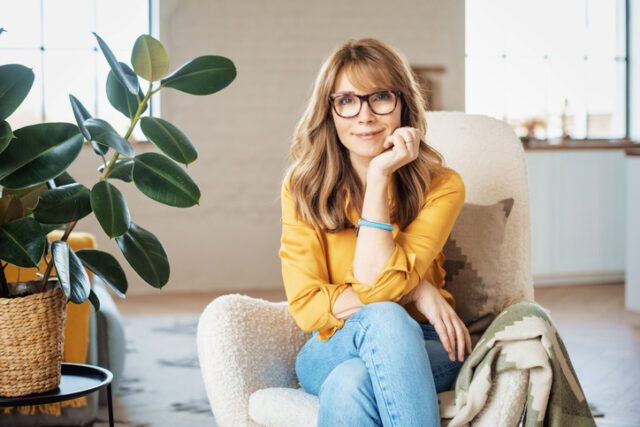By the time you hit your 40s and 50s, friendships don’t look or feel the same as they did in your 20s.

It makes sense when you think about it, but it’s shocking because no one really warns you it’s going to happen. It’s not always bad, but it can be confusing. People drift, priorities change, and the closeness you once had with certain friends might fade without a big fallout. At the same time, the connections you do hold onto can run deeper than ever. Here are some things it would’ve been handy to know in advance about navigating friendship in midlife.
1. The effort has to be intentional now.
 Source: Unsplash
Source: Unsplash In your younger years, friendships are built on convenience—shared flats, offices, night-outs. However, as life gets fuller, you have to make the effort on purpose. Schedules clash. Energy is limited. If you don’t make space for each other, even the best friendships can start to fade. It can feel exhausting at times, but showing up—especially in small, consistent ways—becomes the glue that keeps certain connections alive.
2. You lose people you thought would be permanent.

Some friendships just don’t make it through the life changes that come with your 40s and 50s—divorce, illness, career changes, or even becoming a carer. It’s rarely about drama. It’s just that you start moving in different directions and neither of you quite knows how to fix the distance. It’s painful, especially when the ending is quiet. But it doesn’t mean the friendship failed. Sometimes it just served its purpose for that chapter of your life.
3. Some friends turn into “memory friends.”

There are people you’ll always feel close to, even if you rarely speak. You don’t talk weekly. You might only see them once a year. However, the bond is there, built on shared history and unspoken understanding. These friendships might not be part of your daily life, but they still matter. And they still bring comfort, especially when the nostalgia hits.
4. New friendships are still possible, but they start differently.

You’re not likely to become best mates with someone after one night out anymore. New friendships in your 40s and 50s often grow slowly—built on trust, shared values, and mutual respect instead of just shared hobbies or convenience. It takes longer, and it requires patience. However, when it clicks, it’s usually stronger and less performative than the bonds you made in your youth.
5. You start craving more depth, less fluff.

Small talk gets old fast. You don’t want to spend your limited free time with people who drain you or only show up when it suits them. You start choosing depth—conversations that matter, friendships that feel mutual, and people who don’t expect you to wear a mask. The older you get, the more allergic you become to anything that feels one-sided or performative.
6. Comparison still happens, but it changes.

You’re not necessarily jealous of someone’s clothes or social life anymore, but you might catch yourself wondering why their group of friends seems so tight-knit while yours is spread thin. Or, why they’re always away for girls’ weekends while your phone’s gone quiet. It’s natural, but it’s also worth remembering that people only post the highlight reel. Most of us are quietly figuring it out behind the scenes.
7. Group dynamics can feel more fragile.

When one person stops showing up, it can quietly break the rhythm of a whole group. You realise how much those dynamics depended on one or two people making the plans or bridging conversations. Suddenly, the WhatsApp chat goes silent, and no one really knows how to fix it. Friendship groups in midlife can be surprisingly fragile, and it’s okay to grieve them when they quietly fizzle out.
8. You start making peace with the “good enough” friend.

You might not always have the deep, soul-connecting friendships you crave. However, sometimes you’ll have a coffee friend, a gym chat friend, or someone you talk to at school pick-up, and that’s okay. Not every friendship has to hit emotional depths to be valuable. These casual connections still offer warmth and belonging in their own quiet way.
9. Some people won’t grow with you, and that can get awkward.

When you’re working on yourself, getting healthier, setting boundaries, or choosing a calmer life, not everyone comes along for the ride. Some friends might try to pull you back into old habits or resent the fact that you’ve changed. It doesn’t always mean they’re bad people. It just means you’re growing in different directions, and that’s a valid reason to let some friendships go.
10. Deep friendships start to feel like family.

The people who’ve seen you through decades, loss, love, parenting, breakdowns, and reinventions? They’re no longer just “mates.” They’ve earned their place in your life in a way few others have. These friendships take on a different kind of intimacy. They’re grounding, healing, and fiercely loyal—often more dependable than some relatives.
11. You get better at spotting what’s real.

By this point, you’ve seen enough performative friendships, power dynamics, and unspoken resentment to know what works for you and what doesn’t. You spot red flags faster, and you stop tolerating flaky behaviour or people who only show up when they need something. It’s not bitterness, it’s clarity—and it makes the friendships you do invest in feel lighter and more honest.
12. It’s normal to feel a bit lonely sometimes, even with friends.

Friendship in midlife can be beautiful, but it can also be sporadic. Everyone’s juggling so much—ageing parents, careers, kids, health. Sometimes the silence between friends stretches longer than you’d like. It doesn’t mean you’re unloved or forgotten. It just means life is full right now. And if you’re feeling disconnected, chances are someone else is too, and would love to hear from you first.




